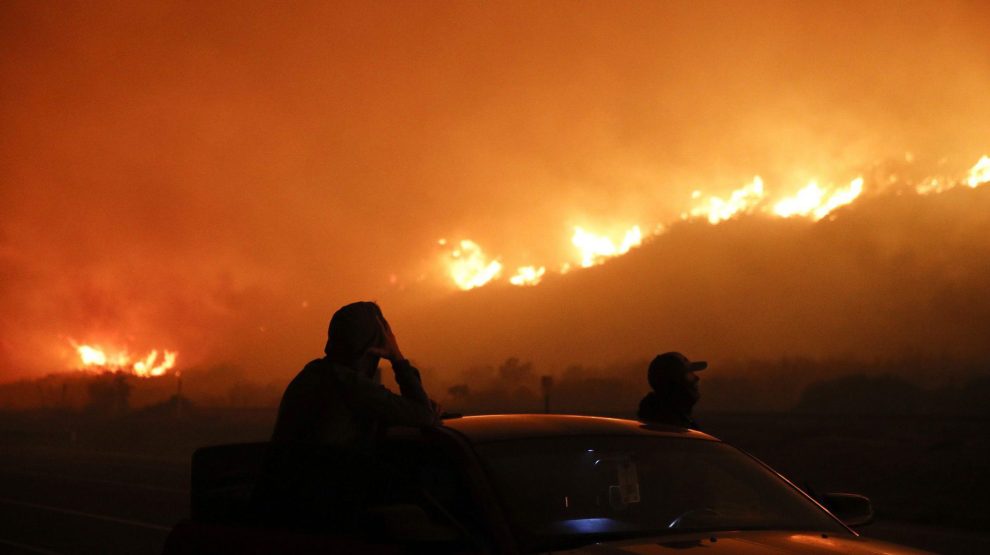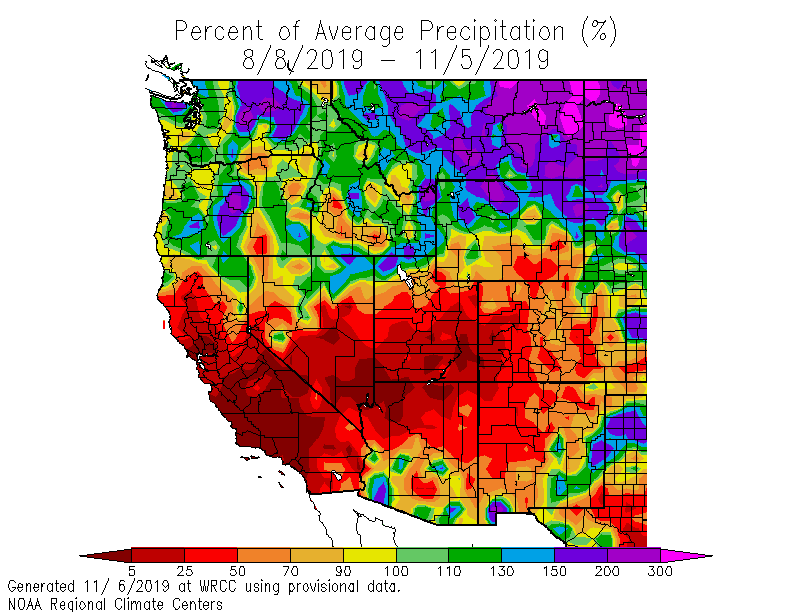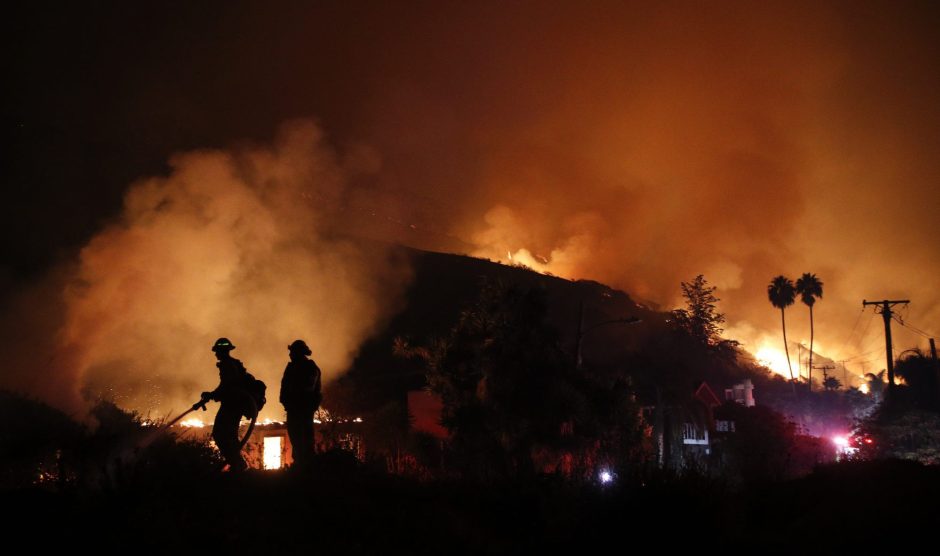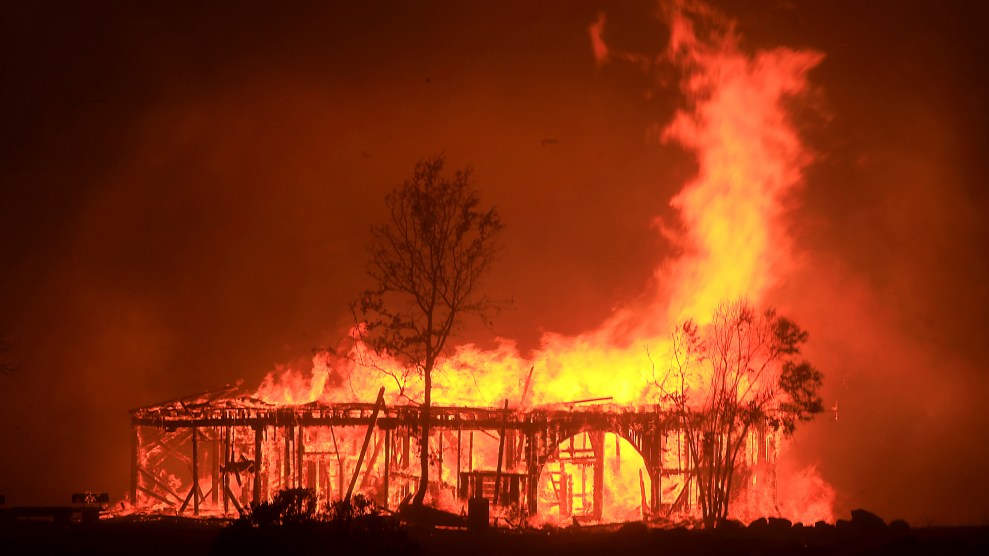
Two spectators watch as a wildfire burns along the 101 Freeway Tuesday, Dec. 5, 2017, in California.Jae C. Hong/AP
Fires have been ravaging Los Angeles and neighboring counties since Monday evening, scorching upwards of 83,000 acres of land. Flames have traversed the 405 and 101 highways, some of the routes that tens of thousands of evacuees need to leave their homes and flee to safety. California’s fire season often extends into the fall, but blazes this late in the year are unusual, Chief Daniel Berlant, assistant deputy director of Calfire, told the New York Times. “In the last decade we’ve had more and more fires in the nontraditional fire season months, which really emphasizes the changing climate that we have here in California,” he said.
Indeed, climate change may be to blame for more common and more intense fires in the West. Two-thirds of California’s largest wildfires in the past century have occurred since 2002, according to Calfire.
🔥 #LALATE 🔥 #BREAKINGNEWS #ThomasFire: #VenturaFire, #SantaPaula Fire Maphttps://t.co/4pO8t9sVNs
"Thomas Fire" "Ventura Fire""Santa Paula"#CaliforniaWildfires #ALERT "UPDATE"
pic.twitter.com/INOrP2a6fn— LALATE – WEATHER (@LALATEWEATHER) December 6, 2017
Back in October, when fires seared Northern California’s Napa and Sonoma counties, my colleague Matt Tinoco explored the connection between the increasing number of wildfires every year and our warming climate:
Climate change is a major contributing factor in the uptick of firestorms. As our planet continues to warm and weather patterns become more unstable—and as humans keep developing more land—experts expect that devastating fires like those currently searing across California’s wine country will become the norm, not the exception.
“Climate is really running the show in terms of what burns,” Park Williams, a bioclimatologist at Columbia University, wrote for a recent study. “We should be getting ready for bigger fire years than those familiar to previous generations.”
Indeed, in many places, fires are already becoming more frequent and intense. Since 1970, the average fire season length has grown about 78 days longer in parts of the American West and Alaska, according to the Natural Resources Defense Council. Earlier spring snowmelt has been linked to a dramatic uptick in western wildfire activity since the mid 1980s. And bioclimatologist Park Williams’ study, released last year, concluded that human caused climate change is responsible for doubling the amount of land burned in the American west since 1984.
By the end of the 21st century, scientists predict that more than 60 percent of the Earth’s land will be more vulnerable to wildfire than it is today, mostly in mid-to-high latitudes like the American West.
So why does climate change promote fires? One reason is that it’s just hotter than it used to be. Shorter cold winter periods and higher temperatures in spring and summer mean that vegetation and soil have more time to dry out than they have in the past, lengthening the time of wildfire season.
Eric Sagara, a journalist who’s reported extensively on wildfires, also points out the changing winter precipitation patterns can prompt the growth of more fire fuel.
“We’ve always seen pendulums,” said Sagara. “But the dry periods are getting drier, and wet seasons are getting wetter. During the wet period, plants flourish. Then the dry period comes and dries everything out.”
Sagara’s pendulum analogy describes exactly what’s happened in California over the past year. With roughly 90 inches of rain, last winter was officially the wettest rainy season on record across several spots in Northern California. The winter rains put an end to California’s five-year-long drought, and launched almost all of the state into most verdant spring in recent memory.
But the summer that followed was oppressively hot—the hottest on record in parts of Northern California that are currently burning, according to NOAA’s National Centers For Environmental Information:
Since the winter rains ended, much of California has been bone dry. Summer and fall are traditionally dry seasons in California, but this year has been drier than usual:
The winter rains promoted more vegetation growth, much of which dried out in the record heat and became kindling for the current fires.
















